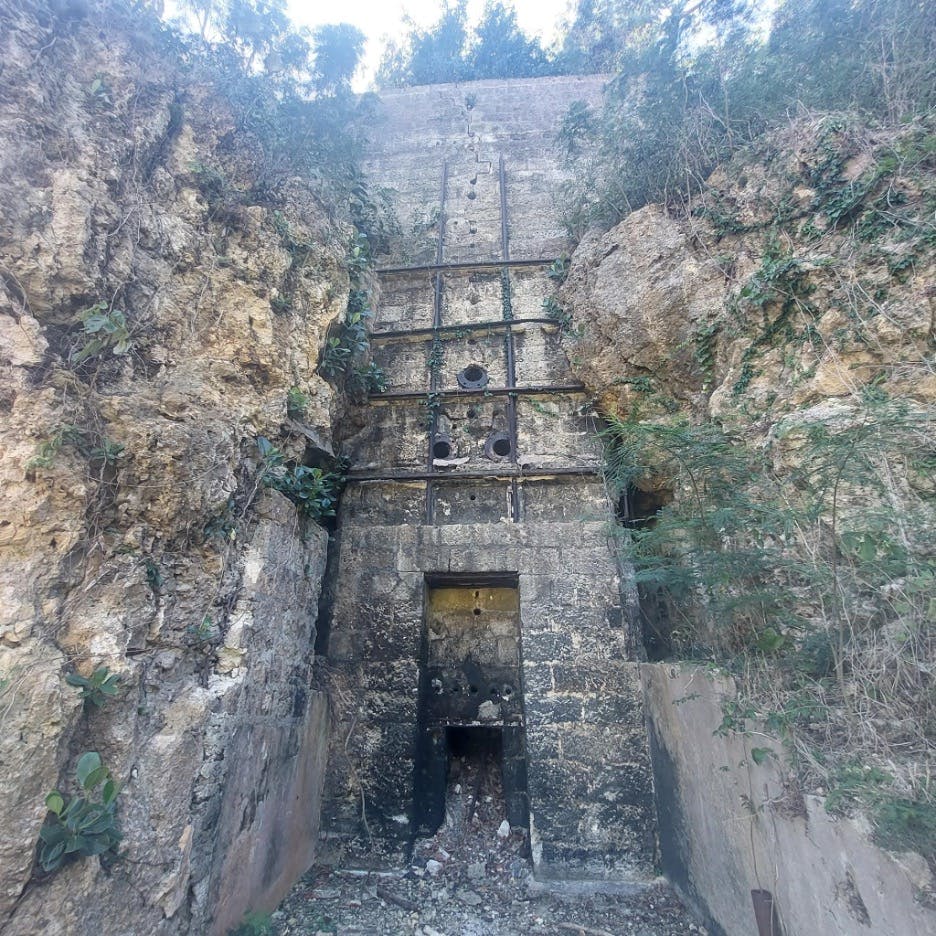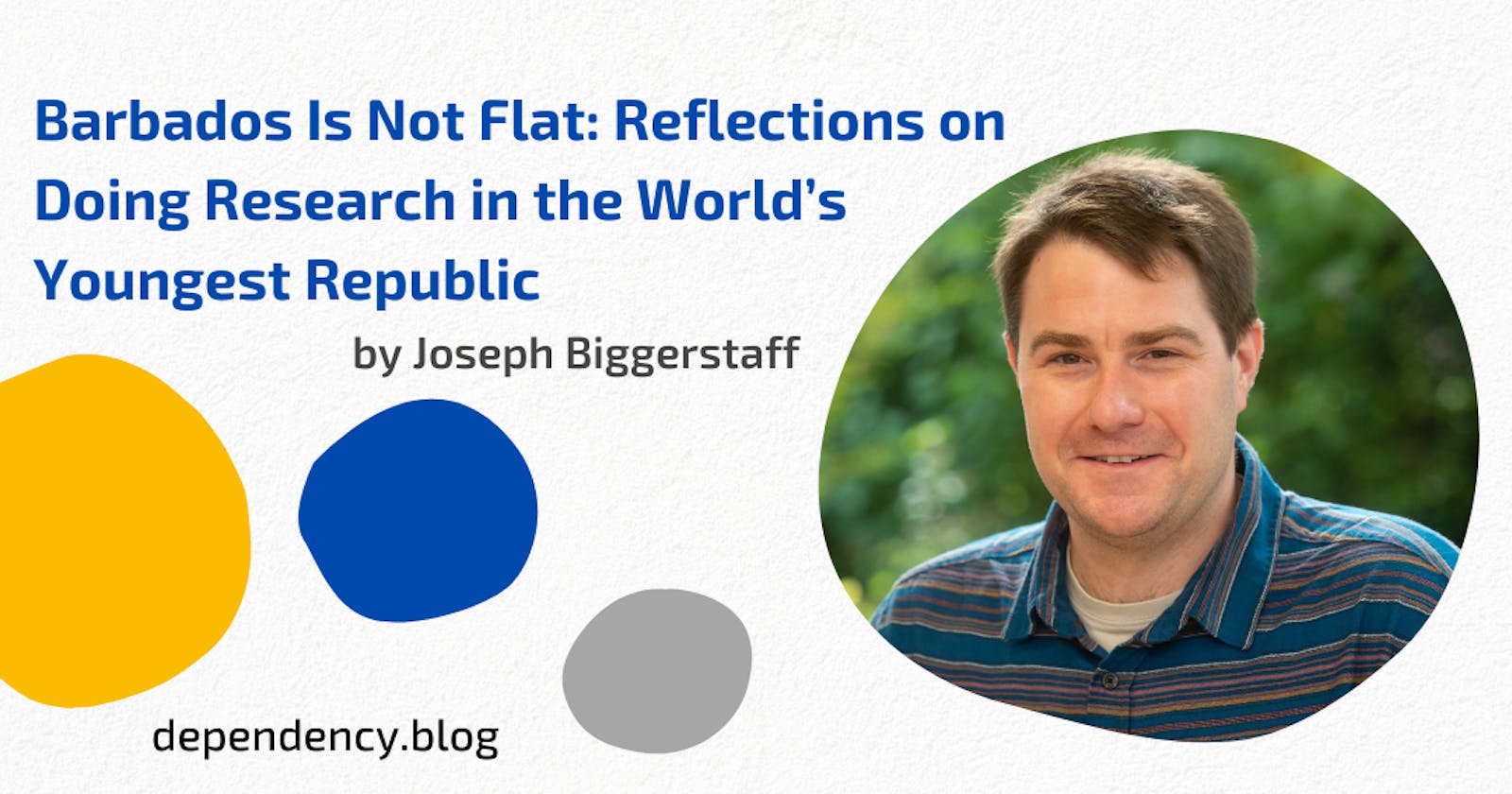Barbados is Not Flat: Reflections on Doing Research in the World's Youngest Republic
Hiking with the Bajans, photo by author
Barbados is a small island in the eastern Caribbean. Probably due to its location, slightly protruding from the other Leeward islands, Barbados was only periodically inhabited by indigenous Caribbean societies prior to permanent settlement by the English in 1627, after which it quickly became the first major sugar colony in the English Atlantic and remained part of the British Empire until independence in 1966. Though it still produces some sugar, the island's economy is now focused on tourism. It also exports people, like the popular singer Rihanna, who is undoubtedly the world's most well-known Bajan.
Map of the Caribbean Sea. Barbados, see bottom right, is the easternmost island in the Leeward Islands, Wikipedia Commons
I visited Barbados in early 2023 at an exciting and complex moment in the country’s history. The island nation had recently removed Queen Elizabeth II as head of state in November 2021.
This momentous event occurred shortly after Mia Amor Mottley was elected as the country’s first female prime minister. Mottley is almost as beloved as Rihanna, who performed at the 2023 Super Bowl Halftime Show.
Talk of Rihanna’s performance punctuated the buzz in the salty Caribbean air.
There were other things floating around, too, as Barbados, along with the rest of the world, cautiously adapted to COVID’s evolution from a pandemic to an endemic virus. In droves, the tourists were finally returning to Barbados, which seemed smaller to everybody– especially locals– since the introduction of a special visa program allowing foreigners to work remotely from Barbados for up to twelve months.
A typical "cruiser" photographed by the author at the St. Nicholas Abbey plantation in St. Peter, Barbados.
Barbados is highly dependent on tourism. These tourists are a comical mix of uber-rich shadowy figures– "big spenders"– who hide out in multi-million-dollar estates and a more middling crowd of visitors who come by the hundreds of thousands annually on cruise ships.
"Cruisers" visit various attractions around the island and then return to port at night. They never stay on the island for longer than a day or two. News coverage of the recent devastating wildfires in Maui has brought to light the frustration and ambivalence felt by the people of Maui toward tourists there. You don't get this sense in Barbados, and I suspect the fact that cruisers are contained in port and don't stay very long makes its dependency on the tourism industry more tolerable.
Barbed wire and beaches. A concrete wall with barbed wire atop protects a coastal villa in St. James parish. Multi-million-dollar developments provide a getaway for the big spenders who flock to the island every January through March. Thankfully, the developers preserved a narrow line of public access to the beach, which I was able to utilize during the second half of my stay in Barbados.
At one point in his A True and Exact History of Barbados (1657), Richard Ligon describes the island to his readers as one massive sugar plantation.
As I already mentioned, Barbados was indeed the first modern sugar colony in world history. Sugar production was re-invented in seventeenth-century Barbados, and even after it was eclipsed by other islands in terms of output, the island continued to export industry experts for centuries. For example, it was the Bajan John Buhot who, after sailing from Bridgetown to Brisbane, was the first person to successfully refine sugar in Queensland, Australia, in the 1860s. Soon thereafter, the region catapulted nearly to the top; it became one of the world's foremost sugar producers.
Just as sugar production once dominated every facet of life on the island, today, Barbados is one large resort space.
Every home-grown event is measured for its tourist potential, and almost every Bajan dutifully looks after tourists. In what feels like an informal quality assurance test, no matter where you go on the island, you might be asked politely if you're having a good time there.
When I encountered this man in one of the most remote areas of the island's western coast, he immediately volunteered to look after me and inform me about the area– A classic example of what is known as "Bajan hospitality."
Even the adjective for Barbadian, Bajan, contains a sort of post-modern dissonance.
While "Bajan" denotes a creole heritage and a language specific to Barbados, it has also been applied more abstractly to market the island on the world stage as a unique destination. The term "Bajan" has lost part of its true meaning, but the lines between its authentic and commercial meanings are blurred out of necessity.
After all, tourism has been central to the task of imagining and inventing the nation since its independence in 1966. Ironically, in turn, the term Bajan nationalizes a global– that is, diasporic– identity. This subtle move contributes to the slight resentment felt by some people from other former British West Indian colonies, as I learned from speaking with Trinidadians on the island during my visit, who tend to think of Bajans as haughty.
In this blurry and complicated context, it was hard to find the real Barbados.
As a mere researcher, it was difficult, if not impossible, to discern what a 'normal existence' on the island might have looked like in earlier periods because much of its history has necessarily been enveloped by a growing tourist infrastructure. Even its department of archives is housed in an abandoned leper asylum (the Lazaretto). The Barbados Museum, in turn, is located in a former British military prison, another important historical site.
If I had any hope of gaining access to the sites I needed to visit, I would have to be a tourist, though I was, indeed, a poor one. Due to lack of money, I walked everywhere, and it was by walking that I discovered a history detangled from tourism.
The grounds of the Barbados Department of Archives. The archive is housed in a former leper colony that was in operation until 1994.
Looking East and West from inside the courtyard of the Barbados Museum and Historical Society. The BMHS was a former military garrison. The lower image shows the area where incarcerated soldiers received corporal punishment at a whipping post before being confined.
On one of the first Saturdays of my research trip, I decided to hike to the famous slave burial ground at the former Newton Plantation. I am not exaggerating when I say this was perhaps the most foolish undertaking of my life. At some point, the sidewalks disappeared, and then the shoulder of the road disappeared, which meant I had to alternate between sprinting down a narrow highway and ducking in the thick sugar cane fields each time a lorry came roaring past.
By the time I arrived at the Newton Plantation, I was dehydrated and half-dead.
As one of the most well-preserved and extensive burial sites for the African diaspora in a former slave society, Newton Plantation Burial Ground is an important site in the global heritage of slavery, so I was surprised that it was so difficult to find. There are no markers, and to get there, you basically have to trespass through the plantation, which is still in operation.
One Saturday afternoon during the second half of my trip, I set out to survey a former plantation site called "Apes Hill." I had changed lodging and was staying near the island's east coast, where English colonists had amassed the first plantations. I was eager to find remnants of this history in the landscape. After hiking for hours, I stumbled through a golf course and eventually out of a gully into a neighborhood near "Apes Hill."
I'd read somewhere that, in the 1960s, archeologist Jerome Handler had learned about the Newton Burial Site while talking with workers from the plantation.
Earlier on the walk, I had stopped to ask a construction worker for directions, and he’d mentioned that his parents had worked on the former plantation, which was now a lucrative development site. Little of the estate remained, except for its former great house and a lime kiln, which I was especially keen to see.
After this fruitful encounter, I was itching to speak with more locals. But it was not my day. When I met a group of inebriated youths and asked them about the "Ape's Hill" plantation, they looked at me slightly bewildered. After recovering their senses, they shouted out ludicrously expensive offers, "100, no, only 75 US," to guide me back to the main road. I tried to explain before giving up and retreating back into the gully.
The Newton Slave Burial ground is off the beaten track and hard to locate, but it was worth the trouble to visit this important global heritage site.
While revisiting the secondary literature on early Barbados before my visit, I kept finding the same description of the island as flat or relatively flat. This isn't true at all! Go into its gullies, and you'll see and feel that Barbados is hardly flat. This misdescription matters because it informs how we think about the land and the people who labored upon it.
I was eventually able to visit Apes Hill with the Barbados Hiking Association, which meets every Sunday at 6 a.m. and 3 p.m. to hike around the island. These hikes route through former plantations and the island’s many gullies, which were natural borders between the estates.
On my first hike with the group, we trekked through St. Andrew parish, known as the "Scotland" district because its terrain was thought to mirror that of Scotland, for whom St. Andrew serves as the patron saint. At the start of the hike, half of the group was comprised of local Bajans and the other half of tourists looking for a fun Sunday activity. After some time, we came out of the gully to a road.
The leader of the hike, a charismatic Bajan named Papa Jack, blew an ear-shattering whistle with his right hand, bringing the group to a standstill. He announced that things would be very tricky from here on out. Since I am an avid hiker, there was no question of my continuing with the group, and I carried on while most others bailed. I thought I was ready for any challenge, but the Bajan gully, much like the Island’s history, is unparalleled for its deceptive subtlety. One simply cannot hike through this terrain alone.

The ruins of a Lime Kiln at Apes Hill Plantation in St. James Parish, Barbados. An abandoned site tucked into the middle of what is now an expensive country club was once an important industrial production site in a Barbadian plantation complex.
A view looking upward from the bottom of a gully in St. James Parish, Barbados. Gullies are natural watercourses that formed on the island, which emerged from the Caribbean Sea over millions of years. They served as natural borders between plantations and, to the extent it was possible, spaces of refuge for enslaved people.
Members of the Barbados Hiking Association climb through a gully in St. Andrew Parish.
A view north from Chalky Mount on the West coast of the island. The Atlantic coast is far less developed than the Caribbean.
My experience in Barbados taught me the value of thinking beyond traditional archival spaces. While there is no formal archeological component to my project, the fields and gullies tell a story that is silenced in colonial record-keeping practices. They serve as a reminder that much more can be learned about the world’s youngest republic than can be found in an old imperial archive or a travel brochure.
Indeed, Barbados is not at all flat.

